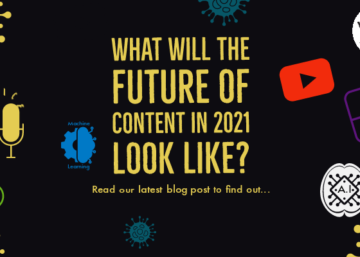Here’s why India’s diving headfirst into the evergrowing stream of digital video content.
Ever since television first came into existence, people have been captivated and transfixed by the video format. The last decade has proven to be pivotal in the rise, popularity and impact of video consumption, owing to the internet and social media. Along with television, audiences have also included streaming sites and OTT platforms, made possible to masses by democratised data and economically priced handsets. Video content is being consumed not just for entertainment and media purposes, but as an intrinsic part of people’s lives. Each day, people stream their favourite TV shows on OTT platforms, watch explainer videos on YouTube to learn something new, follow events and interviews via live videos on Instagram, track the latest news stories on Twitter, and unwind by observing their favourite influencers on Tik Tok. From Zoom meetings with clients to FaceTime sessions with family members, and WhatsApp shareables that journey across contact lists, videos are the currency of communication, seamlessly connecting people from across the globe.
A deep dive into how India’s jumping into the ever-
…video consumption has doubled over the last two years to a whopping 3.7 billion videos per month…
And as consumers get used to consuming video content on-the-go, and having it at their fingertips constantly, brands have discovered several creative and strategic ways of implementing video into their marketing strategies. From Q&A sessions to tutorials, unboxing products to unveiling new services, brands are leveraging videos to meet several marketing objectives – awareness, engagement, interest, desire and action!
With approximately 560 million internet users, India is the second largest online market in the world, ranked just behind China. Recent studies have indicated that online video consumption has doubled over the last two years to a whopping 3.7 billion videos per month, indicating that Indians are becoming dependent on video channels for news, entertainment, sports, education, healthcare and more! Additionally, 65% of video content is consumed on mobile networks, which isn’t surprising, considering there are approximately one billion phone connections in the country. Hence, the internet is no longer considered to be a luxury, rather an enabler of economic, social and cultural transformation.
Having established that the video format is here to stay, Word Hatter has broken down some of the most important trends and considerations for marketers to dwell upon.
1. Traditional Versus Digital Platforms
While Gen X is still dependant on traditional channels, Gen Y and Gen Z are completely hooked onto digital platforms for video consumption. This can be attributed to the fact that the latter prefer to consume content when/where/how they’d like to, visa-a-vis having to be confined to a television set and telecast hours. This is where OTT platforms come into play. They are ruling the entertainment and media industry, with seamless subscription models and diverse cinematic content, easily accessed via smartphones and tablets. In fact, Disney+ Hotstar is the most subscribed OTT platform in India.
2. Brand Storytelling
In the past, consumers would rely on a TV commercial, or visit a website and go through a review, to learn more about a product or service. Today, they simply have to scroll through their social media pages. Brands leverage multiple digital platforms to tell their stories in a powerful and impactful manner. Engaging visuals (animation) and sound effects help communicate purpose and core values effectively, thereby offering audiences more than just information, but an incredible experience that can be emotional, humorous or even political. Creating a strong narrative, doesn’t just drive the ROI on clicks, but builds customer delight. As such, brands get their point of view across in a way that would otherwise be impossible through any other medium. Airbnb does a fabulous job with storytelling.
3. Influencer Marketing
As with several other revolutionary social media trends, influencers have spearheaded the movement of video creation. This is simply because they’ve discovered the perfect formula of garnering eyeballs and building a follower base, which is posting regular videos on topics that resonate. There’s something very profound about a ‘face to camera’ interaction. This direct address makes followers feel like they’re getting to know the content creator more intimately, thus strengthening the relationship between both parties. Kanan Gill has managed to achieve this to perfection. Brands often collaborate with influencers to come up with fun and quirky campaigns, that become shareable and viral.
4. Interactive Videos
Given the technological landscape of today, brands are constantly innovating with video formats, trying to come up with newer dimensions of interactivity. One great medium to leverage for campaigns is interactive videos, as they transform a quintessential video watching experience from a monologue to a dialogue. Viewers are given the ability to engage with the video content itself, through a plethora of digital actions like clicking, dragging, scrolling, hovering and gesturing. This in turn, heightens the overall experience. Netflix’s collaboration with the series, Black Mirror, is a great example of this.
5. Virtual Reality
Just when you think that digital experiences can’t get any more interesting, Virtual Reality leaves audiences speechless! VR can be defined as the use of computer technology to create a simulated environment. Companies are increasingly adopting VR in their marketing initiatives, as it successfully bridges the gap between experience and action. By offering a digital experience, as opposed to a physical one, brands can promote products and services in a manner that stands out from the crowd. So, rather than just viewing the story, the consumer is placed within it. Flipkart and Mahindra Racing have utilised Google’s VR360 technology to create immersive media ads with superlative results.
6. Marketing Automation
Indian companies, big and small, are moving towards investing in marketing automation systems. This technology manages marketing processes and multifunctional campaigns, across multiple channels, automatically. By aligning this system with video content, brands can create even more engagement with their target audiences, leading to more shares, referrals and ultimately driving ROI.
As you can see, the video format is expanding, changing, and evolving to fit newer consumer needs and platforms. With YouTube being one of the most popular search engines in the world, and Facebook optimising on native video content on its news feeds, there has never been an easier way to obtain videos, than today! In terms of affordability and distribution, the video format has become an integral tool for brands.
Do you agree?



